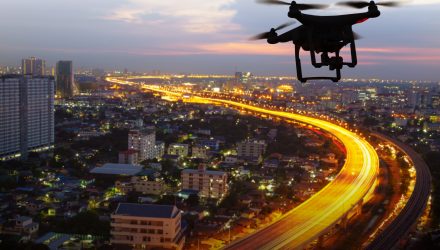What do drones, AI, and proactive policy have in common?
In Marvel Studios’ Iron Man movies, industrialist and genius engineer Tony Stark transforms himself into a superhero who battles evil. In the ultimate display of proactive policing, he’s aided by “Jarvis” (Just a Rather Very Intelligent System), a highly advanced artificial intelligence created by Stark to manage almost everything in his life, but especially to help him fight crime.
Jarvis is just an AI in a superhero movie. But what if you could actually use smart machines to fight crime and make communities safer in real life? Today it’s not so futuristic, and this kind of technology to enable proactive policing may be coming soon to a community or country near you.
For example, in 2017 at least 167 US fire and police agencies acquired drones for proactive policing, which is more than double the number of agencies that obtained unmanned aircraft in 2015. More agencies acquired drones in 2016 than in the previous three years combined, according to a report by the Center for the Study of the Drone at Bard College.
Law enforcement agencies like Indiana’s Noble County Sheriff are using drones to locate suspects during pursuits. In another example, the Oakland, CA, fire department used a drone after a deadly warehouse fire to scan for hot spots, a job that’s both difficult and dangerous for a human. This is a perfect application of using data derived from technology to save lives.
Managing the Intelligence Life Cycle: A More Effective Way to Tackle Crime
Faced with vast amounts of varied data, your agency needs to make information available to the appropriate personnel for grading, analysis and review. Higher priority items need to be routed and escalated accordingly. This requires a solution which is rigorous enough to enforce correct procedures, fast enough to avoid delays and flexible enough to change with organizational needs.
Analyzing visual data captured by drones
The increasing use of drones represents a practical application of AI and machine learning. While drones are capable of doing much more than visual surveillance, advances in object detection have greatly expanded the use of drones for images and video stream analytics.
Object detection and classification are basic tasks in video analytics, and are at the forefront of research in AI and machine learning. A variety of algorithms, including YOLO (you only look once) and deep-learning methods such as CNNs (convolutional neural networks), are at the heart of these systems and the basis for developing more complex applications.
Historically, object detection and video analytics approaches were manual and time consuming, requiring extensive human involvement. Most importantly, experts had to restrict image quality and perform a variety of pre-processing steps before training object detection algorithms.
This led to high error rates and sometimes questionable results due to algorithmic limitations and computing capacity. It wasn’t so long ago that 10 frames per second was considered fast.
Today, however, it’s not uncommon to perform analysis at 100 frames per second or more with human-level accuracy – or better. Our capacity to analyze images at scale and quality has never been greater, and the technology is just starting to grow and expand.
Keeping pace with technology
There are a few restrictions slowing progress on using drones and AI for proactive policing: laws, policy and privacy. Local and state agencies in the US have passed rules imposing strict regulations on how law enforcement and other government agencies can use drones.
